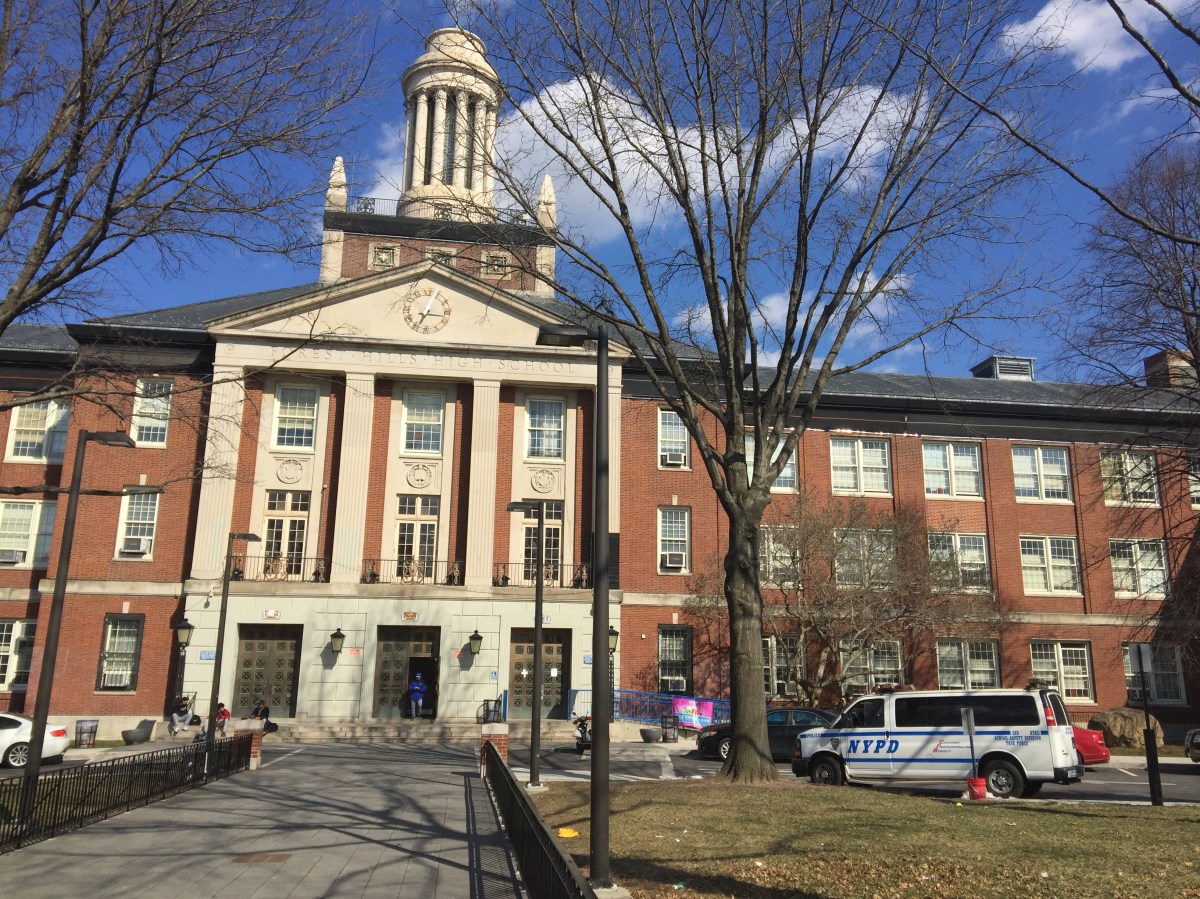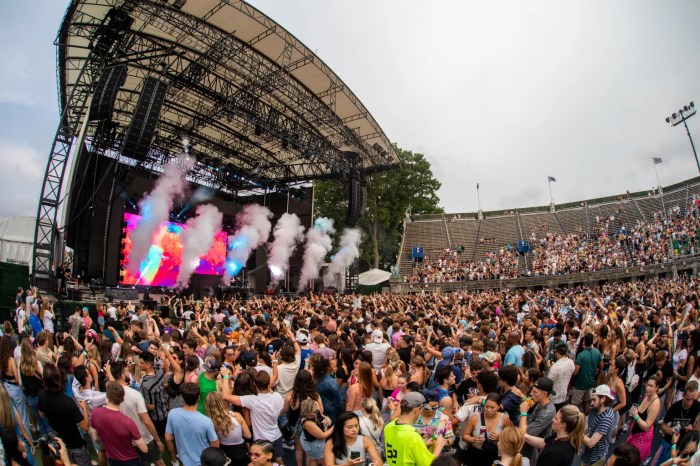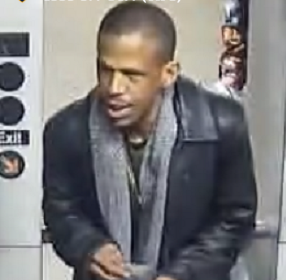With Forest Hills High School (FHHS) being the epicenter of recent disputes between Hispanic and Bukharian youth, Principal Ben Sherman highlighted the need for better surveillance camera coverage around the campus as well as more security staff.
But his requests to the city Department of Education have more or less fallen on deaf ears, he said, and funds that could make the school a safer place for students and staff just has not been allocated.
“Almost none of my entrances or exits have cameras facing out or in, meaning that students run out of the building and I don’t know who they are. Students open a door and someone comes in, I have no record of anybody coming in,” Sherman said in a Dec. 21 interview with QNS. “I’ve got 24 exits in this building.”
The high school has 4,000 students attending and only 80 cameras, which has led to students assaulting one another and getting into fights in area where they know there are blind spots. About 100 additional cameras would close the gap, according to staff at the school who have been working with the DOE to acquire the equipment which can cost about $1,000 each.
“Forest Hills High School’s budget grew by $2 million this school year, and they are scheduled to receive an entirely new camera system, including additional cameras, in 2019,” DOE spokeswoman Miranda Barbot said. “We work closely with every school community to ensure they have the resources they need, and this school is safe.”
Sherman shared cell phone footage of a fight that took place over past week in a section of the school where surveillance cameras cannot reach, pointing out that the only way they can know what happened during a dispute is if it is filmed by bystander.
In the video, two students, one wearing a hood, squared up in a hallway and a brief series of blows were exchanged before a teacher and a security guard rushed over to break it up.
“Several of the kids were released from a superintendent’s long-term suspension [regarding an earlier incident] and within days began to settle the score,” Sherman said. “Most of the gang fighting happens in the neighborhood, it’s rare for it to happen in the school like that video showed.”
Another video depicted a group of people ganging up on possibly more than one victim at night in the street near the school.
A victim can be seen going to the ground and receiving a series of kicks from about ten people.
Sherman says this is dispute between Bukharians and Hispanic youth which started with an earlier fight before it culminated in a retribution attack in Nov. 29 assault involving David Paltielov, 16. Paltielov was not involved in the drama, but was mistaken for another person who was involved as he exited a kosher eatery at 64th Road and 108th Street.
Paltielov attended a nearby yeshiva, not FHHS.
Witnesses said there were about 20 to 30 crowded around the scene when Paltielov when he was attacked, and cops from the 112th Precinct arrested Jonathan Torres, 18, and Victor Hidalgo, 17.
Although NYPD’s Hate Crimes Task Force determined that there it was not an antisemitic attack, a crowd of Bukharians took to streets in defiance claiming that they are the victims of a growing number of hate crimes.
Police arrested several people who were part of the crowd of teens which moved from 108th Street toward the boundary of the 110th Precinct near Queens Center Mall on Nov. 30.
Officers at a Dec. 6 Neighborhood Coordination Officers meeting described this as a “perfect storm” with the excitement of fights earlier in the week and an early dismissal, but witness said the scene was fear-inducing.
Adam Bergstein, the FHHS chapter leader for the United Federation of Teachers, said that with a school built in 1940 which is now at 200 percent capacity upgrades are not only long overdue but is not immediately on the agenda for the DOE.
Since Bergstein alleges that the city reduces funding by 10 percent for high performing schools in order to improve lower performing schools, he fears the FHHS’ success could be its undoing.
“This school, along with other schools in Queens have been underfunded grossly,” Bergstein said. “Even if we use a low-end estimate, over a ten year span, this school has lost between $12 and $30 million in funding that would have been available to provide additional resources in safety and security.”
Just this year alone, FHHS has been defunded by $5 million, and it is not alone, Bergstein said.
But the DOE denied that this is accurate and that they do not defund high performing schools by 10 percent.
On Dec. 11, a student at Cardozo was slashed in the face followed by the school going to lockdown for several hours and cell phone footage circulating. There calls for metal detector and other safety measures to be taken after the incident.
“If you’re a school with a successful graduation rate, 10 percent of your budget is removed annually and redistributed to schools that are failing,” Sherman said.
“Security cameras will help us, it is not the end all, be all. Someone has to monitor them and someone has to help us to identify kids who are cutting class, who are up to no good and just hanging out, thieves,” Sherman said. “We’ve all got [cameras] on our phones. Why can’t we use inexpensive, off-the-shelf technology to help us improve the safety of the school.”
The 112th Precinct has worked around the school to calm the conflict between the Bukharians who felt they were the victims of antisemitic attacks and Hispanic youth who also felt they were deal with racism, according to Sherman.
Sherman called on city Comptroller Scott Stringer to look into how school can get the resources it needs during a roundtable in Kew Gardens on Tuesday.
































